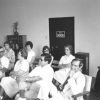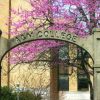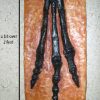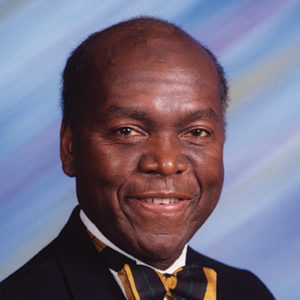calsfoundation@cals.org
David L. Evans (1939–)
David L. Evans worked as an engineer on the Saturn rockets and Apollo moon landing missions but became best known later for his recruitment efforts on behalf of Harvard University, where his work led to greater diversity in the student body. He was inducted into the Arkansas Black Hall of Fame in 2005.
David L. Evans was born in 1939 in Wabash (Phillips County), near Helena (Phillips County), to sharecropper parents; he was the fourth of seven children. His father died when he was ten years old. Family members encouraged his mother, pregnant with her seventh child, to move to Chicago, Illinois, or Cleveland, Ohio. Instead, his mother left tenant farming and became a maid. When Evans was sixteen, his mother died in her employer’s kitchen from a cerebral hemorrhage. His second-oldest sister, Maxine, left college two months before her graduation and returned home to work as a substitute teacher to care for Evans and his siblings. Evans worked part-time jobs to bring in money, including picking cotton, chopping weeds, and working in local shops in downtown Helena.
Despite having a combined education of only six years between them, Evans’s parents valued religion and education. All seven of their children attended college. His sister Maxine eventually received her degree from LeMoyne–Owen College in Memphis, Tennessee, and became an elementary school teacher. A younger sister, Darnetta Clinkscale, became the head of the medical department of Barnes Jewish Hospital in St. Louis, Missouri.
Evans originally wanted to pursue creative writing in college but realized quickly that he needed to do something to contribute to supporting his family. His talents in math and science led him to enroll at Tennessee State University, a historically black institution, and he received an electrical engineering degree. After graduation, he worked for Boeing and Lockheed. In 1964, Evans then enrolled at Princeton University and pursued a PhD. He ended his study early and instead earned a master’s degree in electrical engineering in 1966. Two other siblings completed post-graduate degrees from Northwestern University and the University of California at Los Angeles.
Evans returned to the South to work for the National Aeronautics and Space Administration (NASA) in Huntsville, Alabama. He served as an aerospace scientist in quality control for IBM’s Federal Systems Division for the Saturn rockets and Apollo moon landing missions.
Evans was present during the integration of Huntsville’s schools and sought to address the high drop-out rate of black students. He located a local program and began an unpaid, one-man recruitment and tutoring service for black students seeking higher education. He reached out to roughly 100 colleges around the country, which all responded. Chase Peterson, dean of admissions at Harvard University, replied with a three-page letter saying that he hoped to work with Evans to diversify Harvard’s student body. During his first year of recruitment, Evans successfully recruited five students to Princeton University, Brandeis University, Smith College, and Washington State University.
With local media attention, Evans received job offers from Harvard, the College Entrance Examination Board, and Massachusetts Institute of Technology (MIT). He also caught the attention of the local Ku Klux Klan and was placed under surveillance. In 1970, Evans took a two-year leave-of-absence in engineering to join the faculty and staff in the Harvard Admissions Office. Weeks after his arrival, Evans met Mercedes Sherrod; they married and had two children. During the turmoil of the late 1960s and early 1970s, Evans came to consider his recruitment work more influential on society, and he left engineering for education permanently.
During his time at Harvard, Evans served as a proctor and advisor for first-year students in Harvard Yard and assistant dean of freshman. He then became the senior admissions officer at Harvard. He has been a member of the advisory committee to the Harvard Foundation on Race Relations since 1981. He has also served as a trustee of St. George’s School in Newport, Rhode Island; on the board of trustees of Roxbury Latin School; on the community advisory board of WGBH in Boston, Massachusetts; on the board of directors of Harvard Student Agencies; and as a tutor in the Charles Street AME Church after-school program.
For Helena’s 150th anniversary, Evans was honored as one of six prominent citizens (and the only black honoree). He received the C. Clyde Ferguson Award in 1986 and the Harvard Faculty of Arts and Sciences Administrative Prize in 2002. In October 2003, the David L. Evans Scholarship Fund was established, and it has raised over $1,000,000. In 2004, artist Stephen Coit painted his portrait, which now hangs in Harvard’s Lamont Library. Evans has been featured in Newsweek and on Good Morning America; he is also a published author.
Evans worked with his friend and colleague Henry Louis Gates Jr. in exploring his genealogy, eventually discovering that his maternal grandmother was born a slave in Tallahatchie County, Mississippi, in 1861. Evans and his family established a scholarship at LeMoyne–Owen College in honor of his sister Maxine, who died in Los Angeles, California, in 2009.
For additional information:
Blumenthal, Matthew. “From Sharecroppers’ Son to College’s Gatekeeper.” Harvard Crimson, October 17, 2005. http://www.thecrimson.com/article/2005/10/17/from-sharecroppers-son-to-colleges-gatekeeper/ (accessed August 30, 2017).
Counter, S. Allen, and David L. Evans. I Sought My Brother: An Afro-American Reunion. Cambridge, MA: The MIT Press, 1981.
Kugel, Judy F. “Interview with David L. Evans.” College and University 83 (October 1, 2007).
Robbie K. Gill
Central Arkansas Library System
 Divergent Prosperity and the Arc of Reform, 1968–2022
Divergent Prosperity and the Arc of Reform, 1968–2022 Education, Higher
Education, Higher Science and Technology
Science and Technology David Evans
David Evans 




Comments
No comments on this entry yet.